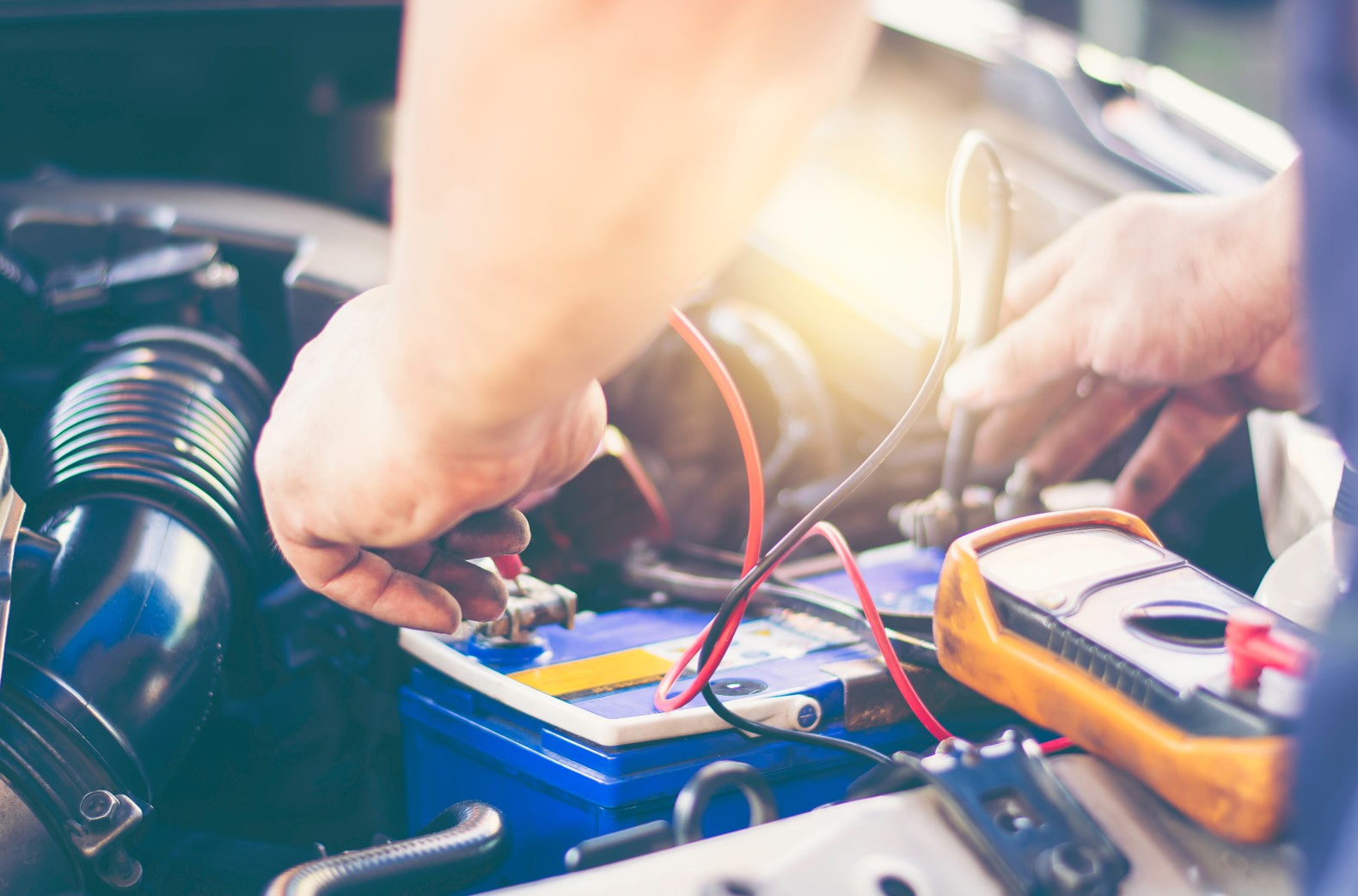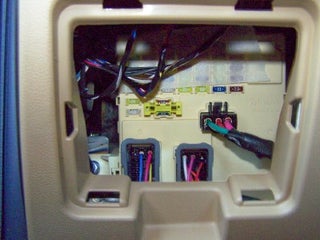Due to parasitic drain or an aged battery, you car battery dead after sitting 5 days. Regular maintenance can prevent this.
Car batteries can lose their charge if left idle for extended periods. Parasitic drain, which occurs when electrical components draw power even when the car is off, is a common cause. Older batteries are more susceptible to losing charge quickly.
Ensuring all lights and electronics are off before leaving the car can help. Regularly starting the car, even when not in use, can also keep the battery healthy. Investing in a battery maintainer or charger can be beneficial for those who don’t drive frequently. Proper maintenance and timely replacement can prevent unexpected dead batteries.

Credit: m.youtube.com
Common Causes
Car batteries can die for many reasons. Often, a car sitting for five days can lead to a dead battery. Knowing the common causes helps prevent this problem.
Parasitic Drain
Parasitic drain occurs when electrical devices pull power from the battery. Even when the car is off, some components continue to use energy.
- Alarm systems
- Clocks
- Radio presets
These small drains can add up, especially over several days. Make sure to turn off all lights and accessories before leaving your car.
Faulty Alternator
The alternator charges the battery while the car runs. If the alternator is faulty, the battery may not get charged properly.
Signs of a faulty alternator include:
- Dim headlights
- Warning lights on the dashboard
- Strange noises from the engine
If you notice these signs, get your alternator checked. A faulty alternator can quickly drain a battery, especially if the car sits idle.
| Component | Effect on Battery |
|---|---|
| Parasitic Drain | Slow, continuous discharge |
| Faulty Alternator | Inadequate charging |
Symptoms Of A Dead Battery
A car battery dying after sitting for 5 days is common. Recognizing the symptoms can save you time and stress. Knowing these signs helps you act quickly.
No Start Condition
A no start condition is a major symptom of a dead battery. When you turn the key, nothing happens. The engine does not crank. It feels as if the car is completely dead. This can be frustrating and inconvenient.
Here are some signs of a no start condition:
- No sound when turning the key
- Clicking sound instead of engine cranking
- Interior lights not turning on
If you notice these, your battery is likely dead. A quick test with a multimeter can confirm this.
Dim Lights
Dim lights are another common sign. Your headlights and interior lights may appear dull. This happens because the battery lacks power.
Check for these indicators:
- Headlights not as bright as usual
- Dash lights and radio display are faint
- Lights flicker or go out completely
Dim lights mean your battery is struggling. Recharging or replacing the battery is often the solution.
How To Diagnose
Finding your car battery dead after sitting for 5 days can be frustrating. It’s essential to know how to diagnose the issue. This will save you time and money. Below are some steps to help you identify the problem.
Using A Multimeter
A multimeter is an essential tool to check your car battery’s health. Follow these simple steps to use it:
- Turn off your car and remove the keys.
- Set your multimeter to DC voltage.
- Connect the red probe to the positive terminal.
- Connect the black probe to the negative terminal.
- Check the voltage reading.
A healthy battery should read between 12.4 to 12.7 volts. If the reading is below this range, your battery may be weak or dead.
Checking For Corrosion
Corrosion on the battery terminals can cause power issues. Follow these steps to inspect and clean the terminals:
- Open the car hood and locate the battery.
- Check the terminals for a white, powdery substance.
- Wear gloves and safety glasses for protection.
- Mix baking soda with water to create a cleaning solution.
- Use a brush to apply the solution to the terminals.
- Scrub the terminals gently to remove the corrosion.
- Rinse with water and dry with a clean cloth.
After cleaning, reconnect the terminals and check if the battery holds a charge.
By diagnosing the issue early, you can prevent future battery problems. Using these simple methods will help you keep your car running smoothly.
Jump-starting Your Car
Having a dead car battery after sitting for 5 days can be frustrating. Jump-starting your car can get you back on the road quickly. Follow the steps below to safely and effectively jump-start your vehicle.
Safety Precautions
- Wear gloves and safety goggles.
- Ensure both cars are turned off.
- Keep metal objects away from the battery.
- Check for any battery leaks or damage.
Step-by-step Guide
- Position the cars: Park the working car close to the dead car.
- Turn off both engines: Ensure both vehicles are off.
- Connect the cables:
- Attach the red clamp to the dead battery’s positive terminal.
- Connect the other red clamp to the working battery’s positive terminal.
- Attach the black clamp to the working battery’s negative terminal.
- Connect the other black clamp to an unpainted metal surface on the dead car.
- Remove the black clamp from the unpainted metal surface.
- Disconnect the black clamp from the working battery.
- Remove the red clamp from the working battery.
- Disconnect the red clamp from the dead battery.
Following these steps ensures a safe and effective jump-start. Always remember to follow the safety precautions mentioned.
Preventing Future Issues
Experiencing a dead car battery after sitting for five days can be frustrating. Implementing a few simple strategies can help prevent this issue. Focus on regular maintenance and using a battery tender to keep your battery in top shape.
Regular Maintenance
Regular car battery maintenance is crucial. Follow these steps to ensure your battery remains healthy:
- Check the battery terminals: Clean any corrosion or dirt.
- Test the battery voltage: Use a voltmeter to check the charge.
- Inspect the battery case: Look for cracks or leaks.
- Ensure proper connections: Tighten loose connections.
- Keep the battery charged: Start the car regularly.
Battery Tender Usage
Using a battery tender can prolong your battery’s life. A battery tender is a device that keeps your battery charged without overcharging it.
Consider the following tips when using a battery tender:
- Choose the right tender: Select a tender suitable for your battery type.
- Connect the tender properly: Follow the manufacturer’s instructions.
- Monitor the charging process: Ensure the tender operates correctly.
- Store the tender safely: Keep it in a dry, cool place.
A battery tender can be a game-changer. It ensures your car battery stays charged, even during long periods of inactivity.
When To Replace Your Battery
Your car battery is essential. It powers everything from the engine to the lights. Knowing when to replace your battery can save you from unexpected breakdowns. Here’s what you need to know.
Signs Of Wear
Car batteries show signs when they are wearing out. Look for these indicators:
- Slow Engine Crank: The engine takes longer to start.
- Dim Lights: Headlights and interior lights appear dimmer.
- Dashboard Warning Light: A battery warning light on the dashboard.
- Swollen Battery Case: A bulging battery case can indicate a problem.
- Frequent Jump Starts: Needing frequent jump starts points to a weak battery.
Battery Age
Battery age is crucial in determining replacement time. Most car batteries last 3 to 5 years.
Check the battery’s manufacture date. You can find it on the battery case. If the battery is over three years old, it’s time to monitor closely.
Here’s a simple table to help you track battery age:
| Battery Age | Action |
|---|---|
| 0-3 years | Monitor performance |
| 3-5 years | Test regularly |
| 5+ years | Consider replacement |
Regular checks ensure your battery’s health and longevity. Replace your battery before it fails to avoid inconvenience.
Choosing The Right Battery
Finding your car battery dead after sitting for five days can be frustrating. Choosing the right battery can prevent this problem. This guide will help you make an informed decision.
Types Of Batteries
There are several types of car batteries. Each type has its own benefits.
- Lead-Acid Battery: Most common and affordable. Suitable for standard cars.
- AGM Battery: Absorbent Glass Mat. More durable and has a longer life.
- Gel Battery: Uses gel instead of liquid. Best for deep-cycle and off-road vehicles.
- Lithium-Ion Battery: Lightweight and long-lasting. Often used in electric cars.
Brand Recommendations
Choosing a reliable brand ensures quality and longevity. Here are some top brands:
| Brand | Key Features |
|---|---|
| Optima | High performance, spiral cell design, long-lasting |
| DieHard | Durable, good warranty, affordable |
| Odyssey | High cold-cranking amps, long life, rapid recharge |
| ACDelco | Maintenance-free, good price, reliable |
Ensure the battery fits your car’s requirements. Check the size, capacity, and warranty. A reliable battery can save you from the hassle of a dead car battery.

Credit: www.instructables.com
Professional Help
Sometimes, a dead car battery after sitting for 5 days needs professional help. Knowing when to call a mechanic can save you time and hassle. This section covers key points, including cost considerations.
When To Call A Mechanic
There are clear signs when you should call a mechanic:
- Battery won’t hold a charge: If your battery dies quickly, it may need replacing.
- Corroded battery terminals: Corrosion can prevent your car from starting.
- Electrical issues: Dim lights or malfunctioning electronics can indicate a deeper problem.
If you notice these issues, professional help is necessary. A mechanic can diagnose and fix the problem efficiently.
Cost Considerations
Understanding the costs involved can help you plan better. Here’s a breakdown of typical costs:
| Service | Average Cost |
|---|---|
| Battery Replacement | $50 – $200 |
| Terminal Cleaning | $20 – $50 |
| Diagnostic Testing | $40 – $100 |
| Labor Charges | $50 – $100/hour |
These costs can vary based on location and car type. Always ask for a quote before proceeding with repairs.

Credit: www.cbac.com
Conclusion
Regular maintenance is crucial to avoid a dead car battery after sitting for five days. Check your battery frequently and keep it charged. A reliable battery ensures your car starts smoothly every time. By following these tips, you can extend your battery’s life and avoid unexpected breakdowns.

